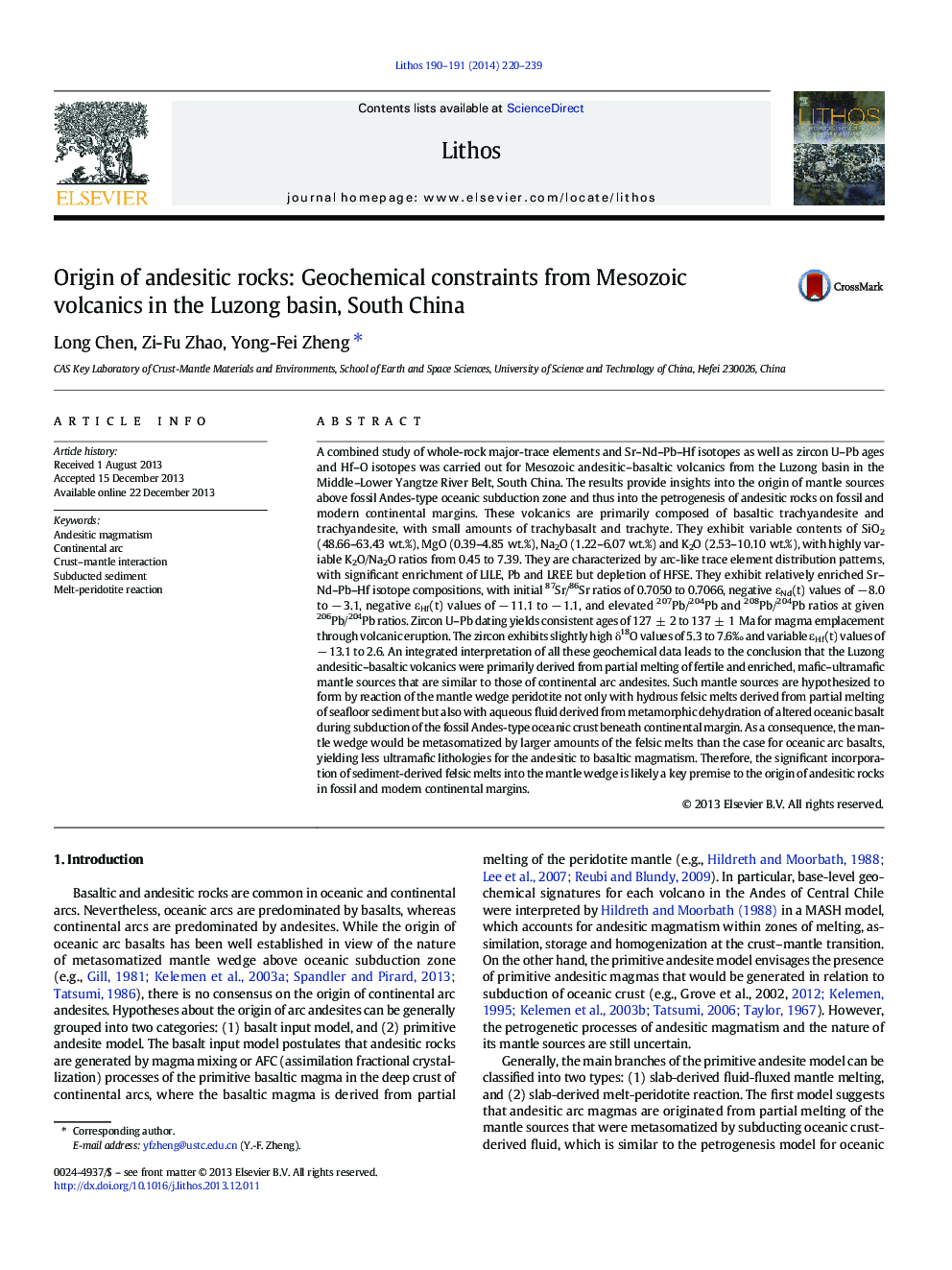| Article ID | Journal | Published Year | Pages | File Type |
|---|---|---|---|---|
| 4716016 | Lithos | 2014 | 20 Pages |
•Mesozoic Luzong trachyandesites were derived from fertile and enriched lithospheric mantle.•The mantle source was generated by metasomatism in a Neoproterozoic Andes-type subduction zone.•The subducted sediment-derived hydrous felsic melt is incorporated into the mantle wedge.•The Neoproterozoic mantle source is reactivated in the Mesozoic for andesitic magmatism.•Slab–mantle interaction beneath continental margin is a premise to andesitic magmatism.
A combined study of whole-rock major-trace elements and Sr–Nd–Pb–Hf isotopes as well as zircon U–Pb ages and Hf–O isotopes was carried out for Mesozoic andesitic–basaltic volcanics from the Luzong basin in the Middle–Lower Yangtze River Belt, South China. The results provide insights into the origin of mantle sources above fossil Andes-type oceanic subduction zone and thus into the petrogenesis of andesitic rocks on fossil and modern continental margins. These volcanics are primarily composed of basaltic trachyandesite and trachyandesite, with small amounts of trachybasalt and trachyte. They exhibit variable contents of SiO2 (48.66–63.43 wt.%), MgO (0.39–4.85 wt.%), Na2O (1.22–6.07 wt.%) and K2O (2.53–10.10 wt.%), with highly variable K2O/Na2O ratios from 0.45 to 7.39. They are characterized by arc-like trace element distribution patterns, with significant enrichment of LILE, Pb and LREE but depletion of HFSE. They exhibit relatively enriched Sr–Nd–Pb–Hf isotope compositions, with initial 87Sr/86Sr ratios of 0.7050 to 0.7066, negative εNd(t) values of − 8.0 to − 3.1, negative εHf(t) values of − 11.1 to − 1.1, and elevated 207Pb/204Pb and 208Pb/204Pb ratios at given 206Pb/204Pb ratios. Zircon U–Pb dating yields consistent ages of 127 ± 2 to 137 ± 1 Ma for magma emplacement through volcanic eruption. The zircon exhibits slightly high δ18O values of 5.3 to 7.6‰ and variable εHf(t) values of − 13.1 to 2.6. An integrated interpretation of all these geochemical data leads to the conclusion that the Luzong andesitic–basaltic volcanics were primarily derived from partial melting of fertile and enriched, mafic–ultramafic mantle sources that are similar to those of continental arc andesites. Such mantle sources are hypothesized to form by reaction of the mantle wedge peridotite not only with hydrous felsic melts derived from partial melting of seafloor sediment but also with aqueous fluid derived from metamorphic dehydration of altered oceanic basalt during subduction of the fossil Andes-type oceanic crust beneath continental margin. As a consequence, the mantle wedge would be metasomatized by larger amounts of the felsic melts than the case for oceanic arc basalts, yielding less ultramafic lithologies for the andesitic to basaltic magmatism. Therefore, the significant incorporation of sediment-derived felsic melts into the mantle wedge is likely a key premise to the origin of andesitic rocks in fossil and modern continental margins.
